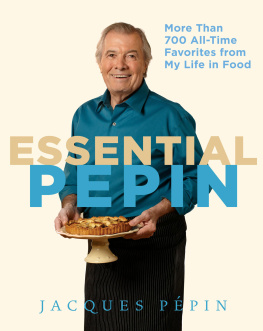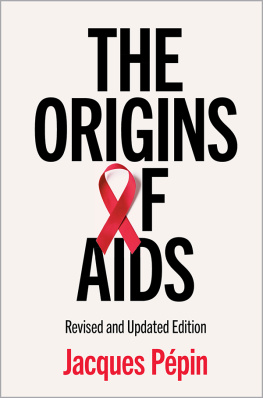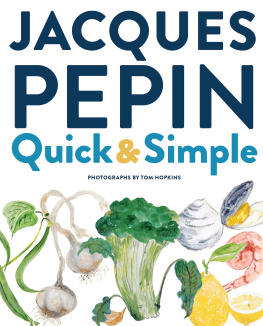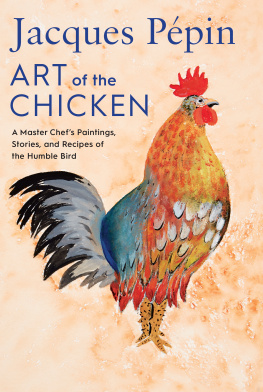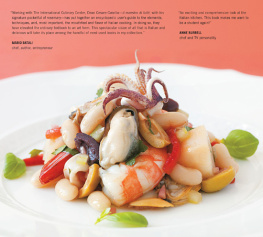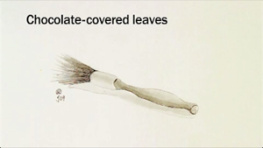Material from The Art of Cooking Volume I and II copyright 1987, 1988 by Jacques Ppin
Photograph copyright for The Art of Cooking Volume I and II 1987, 1988 by Tom Hopkins
All rights reserved. No part of this book may be reproduced in any form or by any electronic or mechanical means including information storage and retrieval systems without the written permission of the copyright holder.
Published by Black Dog & Leventhal Publishers, Inc.
INTRODUCTION

E ven though I wrote La Technique and La Mthode thirty-five years ago, I am happy to say that, with some minor changes, the culinary techniques demonstrated in the books are as current and useful today as they were at that time. A good cook still beats egg whites, bones a chicken, and makes a caramel cage in the same way. Just as in 1974, the greatest hindrance to good performance in the kitchen is an inadequate knowledge of basic techniques.
Along with the hundreds of techniques collected in the original two volumes, La Technique and La Mthode , we have incorporated color photography and additional techniques from my two-volume set, The Art of Cooking , which was published in the 1980s. Furthermore, we have underlined the text in recipe captions that specifically describes what is shown in that picture. In my opinion, both improvements to the current edition will help cooks more readily comprehend whats being demonstrated.
Jacques Ppins New Complete Techniques uses step-by-step pictures and detailed, descriptive text to acquaint cooks of every level with the basic procedures that make up the core, the center, and the heart of the profession. Do you want to learn how things really work in the kitchen? It is the goal of this book to teach you, and in the process, to help you understand and hone the basic manual skills that are almost impossible to explain solely in words. This book, quite simply, will teach you how to cook in a way a conventional cookbook could never do.
Dont be discouraged if you cant master some of these techniques instantly. Some, like the fluting of a mushroom, take practice and patience. Others, like peeling garlic, are quite simple. Remember that as your mastery grows, you will become better able to tackle even difficult recipes with ease and proficiency. In time, you will open your favorite cookbooks and experience them in a new light!

When professionals work with ease and rapidity, it is a result of long years of practice and discipline. There are no secrets or tricks, only feats of skill ( tours de main ) acquired with prolonged effort. Through endless repetition, these techniques will become so much a part of you that youll never forget them. People often tell me that what surprises them most is watching me cook and talk at the same time. This is because my hands are trained to the point where I do not have to think about the processes I use as I make a recipeits automatic. Instead of fighting the mechanics of cooking, I can concentrate on thinking about the combination of ingredients, about taste, and about texture. You may be very creative and imaginative in the kitchen, but you cannot take advantage of those qualities if you dont know the basics. A solid background must precede inventiveness. An artistic mind might create a stunning decoration for a cold salmon, but the dish will be triumphant only if the salmon is first properly cleaned and poached, and the aspic rich and crystal-clearand this requires knowledge of the proper techniques.
For many years I have dabbled in painting, and although I have occasionally come up with what I think is a great idea for a picture, my hands are rarely good enough to express what I have in my head. This is because my knowledge of painting techniques is weak; I havent repeated them day after day after day for hours, so my hands very often are not skilled enough to realize my ideas. In cooking, however, after so many years of practice, I can eliminate a great many potential problems or obstacles along the way as I think about a recipe, and then my hands can do the rest. I can usually come pretty close to my vision on the first try.
In this book, I do not pretend to have explicated the whole spectrum of cooking skills; I havent touched on Asian cooking, for example, concentrating more on the general cooking techniques that I have used all my life. I may have taken for granted very ordinary chores, such as peeling a potato or melting butter. And even with the help of the step-by-step photos, some of the techniques, like making a butter flower, still require a fair amount of patience and perseverance to achieve. Others, like peeling and seeding a tomato or making a rabbit out of an olive, can be mastered instantly. You will discover that there is great satisfaction in conquering dishes that may have frustrated you in the kitchen before. Knowledge of the basics is so rewarding, in that it allows you to try out new ideas, to remedy potentially catastrophic miscalculations, and to tackle any kind of recipe because you will comprehend the mechanics behind it.
Start with simple techniques and work gradually toward the more involved and complicated ones. And have fun! Remember, you are not learning new recipes, you are acquiring a whole new way of cooking, and with this book, you begin your apprenticeship.
Happy cooking!

June 2012
EQUIPMENT
T odays cooking equipment comes in all types, shapes, prices, and materials. The enormous interest in food, heightened by cooking schools, cookbooks, newspapers, magazine articles, the Internet, etc., has spurred the manufacturers into bringing many different types of paraphernalia onto the market, and a lot of it is good. However, it is often hard for people to differentiate. What pots should one buy? Should they be copper? Stainless steel? Heavy aluminum? No-stick? Black cast iron? Enameled cast iron? It is difficult to choose because ultimately there is no ideal pot. Every material has its good and bad points. The thick, heavy, hand-hammered copper is the best to conduct, diffuse, and retain heat. While attractive, it is very heavy, very expensive, and needs constant polishing. Pots should not be lined with tin, as used to be done, but with stainless steel, which is cleaner and more durable.


